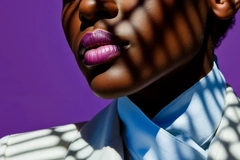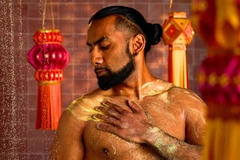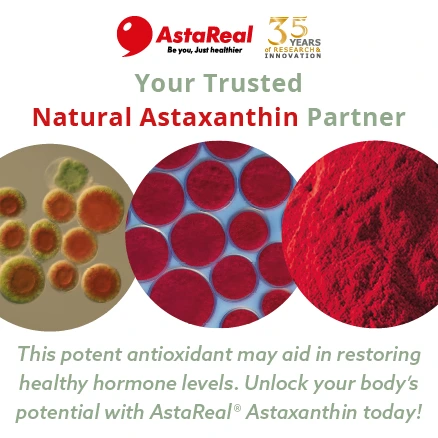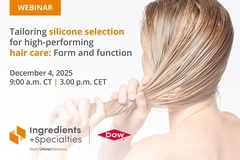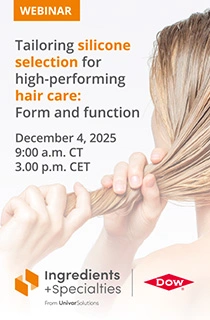Dangerous beauty: American Academy of Dermatology warns of popular yet “problematic” social media trends
The American Academy of Dermatology (AAD) names the Russian manicure, glass skin and at-home red light therapy as the top beauty trends on social media but warns of their “problematic” safety.
Ahead of National Healthy Skin Month in November, board-certified dermatologists offer insights into the effectiveness, safety and long-term impact of these skin care practices.
Amit Om, fellow of the AAD (FAAD), a board-certified dermatologist in Charlotte, US, says “Some of these trends may seem harmless or even beneficial [but] they often don’t have any real science behind them and could end up causing skin damage or other health issues.”
“A board-certified dermatologist can provide you with safe, personalized advice to help you care for your skin without taking unnecessary risks.”
The academy believes social media plays an “integral role” in shaping how people care for their skin. However, it advises users to consult a board-certified dermatologist instead of experimenting with skin care trends that may pose risks.
 The AAD says not soaking the nails during a manicure can cause damage to the cuticle.Samantha Karlin, FAAD and a board-certified dermatologist in Covington, US, adds: “Social media has definitely made people more aware of the importance of skin care and maintaining healthy skin.”
The AAD says not soaking the nails during a manicure can cause damage to the cuticle.Samantha Karlin, FAAD and a board-certified dermatologist in Covington, US, adds: “Social media has definitely made people more aware of the importance of skin care and maintaining healthy skin.”
“What’s important to remember is that not every trend is suitable for every skin type and some might even be harmful and cause damage.”
Dry manicure damage
The Russian manicure, also known as a dry or waterless manicure, skips the usual nail soaking step and uses an electric file to clean, shape and work on the nail and cuticle. The aim is to remove the skin surrounding the nail and the cuticle to make the nails look long and to place polish under the cuticle to make the manicure last longer.
The style is increasingly popular on TikTok. However, Karlin advises against the technique, because the cuticle acts as a protective barrier.
“The cuticle is not designed to be breached. Removing the cuticle puts you at risk for infection from bacteria and fungi. In particular, after Russian manicures, we tend to see patients with paronychia, a type of infection that causes the skin around your nail to become inflamed, painful and discolored,” she explains.
Glass skin concerns
K-beauty continues to sweep through the beauty industry, with glass skin surging across social media platforms.
Karlin describes the desired look as smooth, clear and poreless skin and recommends keeping the skin as moisturized as possible to increase cell turnover and optimize hydration to minimize the appearance of lines.
The AAD suggests using a gentle cleanser, hydrating serum, moisturizer, exfoliator and sunscreen to achieve the look. Some skin care lovers may get breakouts when trying to achieve the glass skin trend.
Some skin care lovers may get breakouts when trying to achieve the glass skin trend.
“Certain aspects of the glass skin trend like moisturizing your skin and using a broad-spectrum, water-resistant sunscreen with an SPF of 30 or higher are positive steps toward better skin care habits,” says Karlin.
While these products promote healthy skin care, the dermatologist highlights that not all beauty users can achieve the desired results due to their skin type.
“The glass skin look might not be realistic for everyone and some people may run the risk of using too many products, which can lead to issues like clogged pores, irritation and breakouts.”
“That’s why it’s important to think about everything in moderation as you’re customizing your skin care routine and remember that as dermatologists, we can help recommend a skin care routine that works best for your skin type.”
Red light skepticism
Red light therapy uses red or near-infrared light to treat skin concerns such as wrinkles, age spots and sagging skin, alongside conditions like hair loss and acne.
“Some studies have shown that with repeated treatments, it’s possible for red light to regrow hair over time, but it’s important to note that there are many causes of hair loss and for some of these causes, we still don’t know if red light can successfully reverse hair loss,” says Om.
 Dermatologists sometimes recommend at-home red light therapy masks.The AAD notices an uptick in at-home red light devices among social media influencers. Some products include masks, panels and wands.
Dermatologists sometimes recommend at-home red light therapy masks.The AAD notices an uptick in at-home red light devices among social media influencers. Some products include masks, panels and wands.
“Dermatologists often recommend red light therapy alongside treatments like medicated creams, microneedling or chemical peels to treat signs of aging. To help you maintain results after an in-office treatment, your dermatologist may recommend using an at-home device,” explains Om.
The US FDA approved several at-home devices. Unlike UV light, which can cause skin cancer, research suggests that red light is harmless.
Many at-home devices have “FDA-cleared” on the packaging, meaning the FDA considers the devices to have a low risk of adverse effects. If side effects are present they are generally mild. Some people experience slight pain or irritated skin after treatment.
Om still believes more research is needed to determine exactly how effective they are.
“If you’re considering using a red light device at home, I recommend first consulting with a board-certified dermatologist, who can talk to you about your overall health and what results you’re hoping to achieve.”

